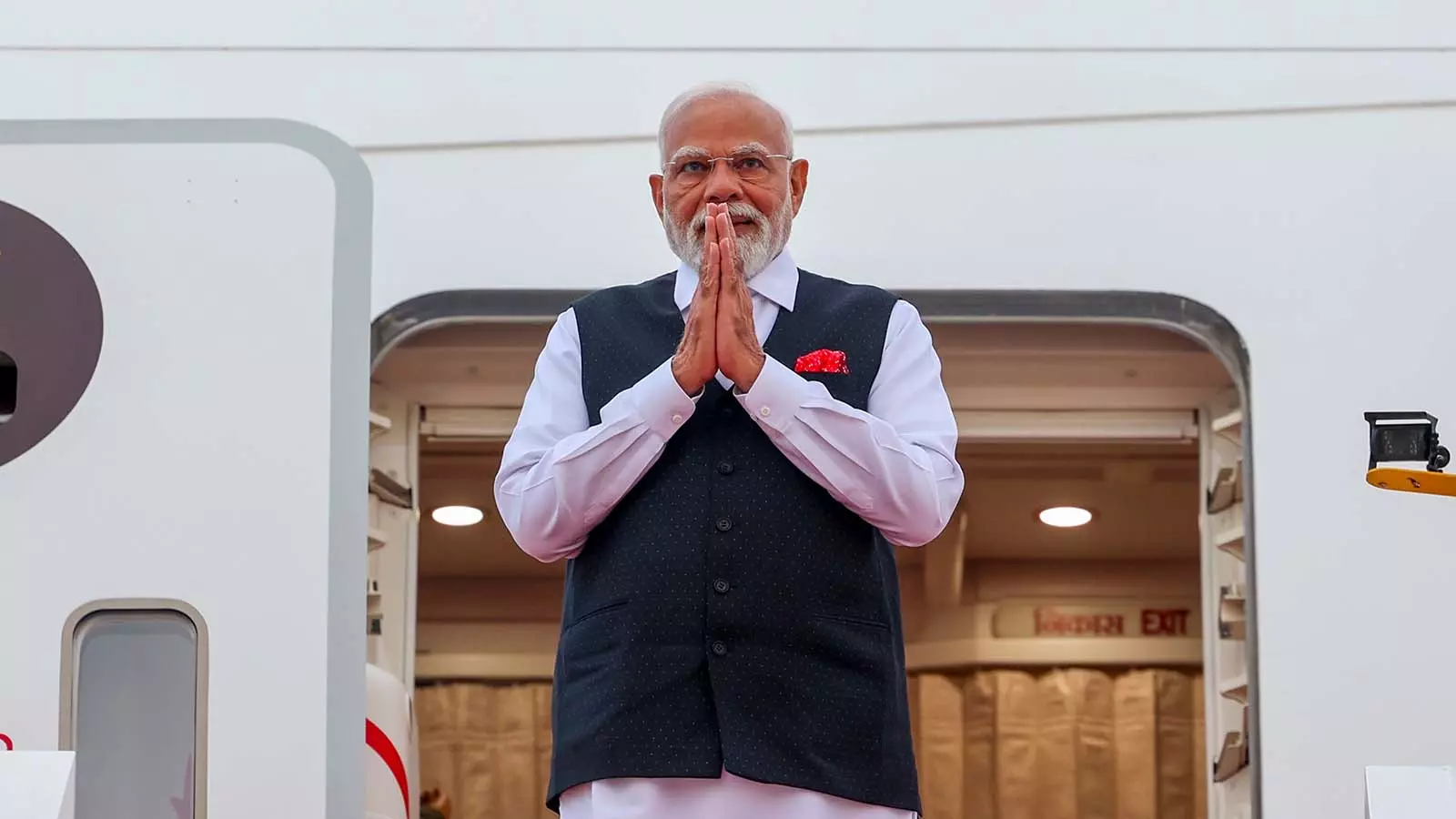
PM Modi arrives in China after 7 years, to meet Xi Jinping at SCO summit in Tianjin
His visit comes amid strained India-US ties, Trump’s tariff offensive, and efforts by New Delhi and Beijing to reset relations after the Ladakh border row

Prime Minister Narendra Modi on Saturday (August 30) reached China following the conclusion of his visit to Japan. The trip, which will see the PM attending the 25th summit of the Shanghai Cooperation Organisation (SCO) in Tianjin on Sunday (August 31) and Monday (September 1), has assumed a greater significance after India’s ties with the US witnessed a sharp downturn in recent times.
Soon after landing in the Chinese city, Modi posted on X, "Landed in Tianjin, China. Looking forward to deliberations at the SCO Summit and meeting various world leaders." He met officials who came to receive him at the airport and walked on a red carpet as local artistes performed to welcome him. He later met members of the Indian diaspora.
Landed in Tianjin, China. Looking forward to deliberations at the SCO Summit and meeting various world leaders. pic.twitter.com/gBcEYYNMFO
— Narendra Modi (@narendramodi) August 30, 2025
The Indian leader, who set foot in China after a gap of seven years, will meet Chinese President Xi Jinping on the sidelines of the SCO summit on Sunday (August 31). What transpires during the meeting will be keenly watched as the two Asian giants aim to strengthen their ties amid global tensions triggered by US President Donald Trump with his heavy tariff regimes.
Also read: Modi gifts vintage precious stone bowl with chopsticks to Japanese PM
Both India and China have been at the receiving end of Trump’s tariff offensives.
During their meeting, Modi and Xi are expected to take stock of India-China economic ties and deliberate on steps to normalise the two neighbours’ relations that came under serious strain after their border row in eastern Ladakh.
India’s growing proximity with the US, which also has sour ties with China, is another reason why ties between New Delhi and Beijing were far from being perfect.
Modi to meet Putin
Modi is also slated to meet Russian President Vladimir Putin and a number of other leaders on the margins of the SCO summit. India has drawn the ire of the Trump administration for buying oil from Russia amid the war in Ukraine. The US imposed an additional 25 per cent tariffs on the South Asian economy as a penalty to increase the total tariff to 50 per cent.
Also read: PM Modi travels by bullet train with Japanese PM Ishiba from Tokyo to Sendai
Ahead of his visit to Tianjin, Modi said it is important for India and China to work together to achieve a stable global economic order.
In an interview with Japan's The Yomiuri Shimbun, he said a stable, predictable, and amicable bilateral relations between India and China can have a positive impact on regional and global peace and prosperity.
“Given the current volatility in world economy, it is also important for India and China, as two major economies, to work together to bring stability to the world economic order,” the prime minister said in the interview published on Friday.
Last visited China in 2018
Modi’s latest trip to China comes less than a fortnight after Chinese Foreign Minister Wang Yi visited India. Following the Chinese diplomat’s wide-ranging talks with External Affairs Minister S Jaishankar and National Security Advisor Ajit Doval, the two sides announced a series of measures for a “stable, cooperative and forward-looking” relationship between them.
Also read: Indian economy prepares for long haul as Trump tariff strikes home
The prime minister last visited China in 2018, first to hold an informal summit with Xi in Wuhan in April and for the SCO summit in Qingdao in June. He was serving his first term in office then.
China’s state-owned Global Times, which is otherwise known for its belligerent takes, including on India, welcomed the development in the ties between the two countries, saying in an editorial that “closer China-India ties are not only a rational choice but also a shared responsibility”.
(With agency inputs)

